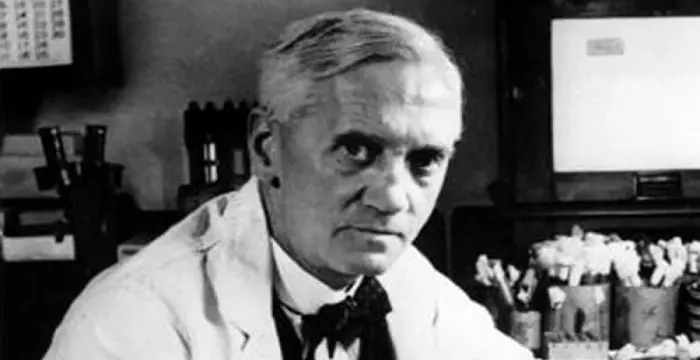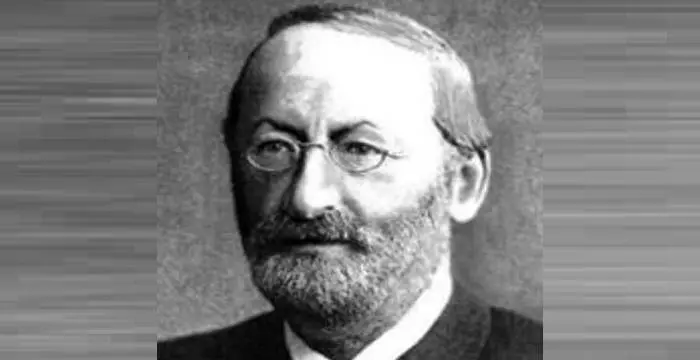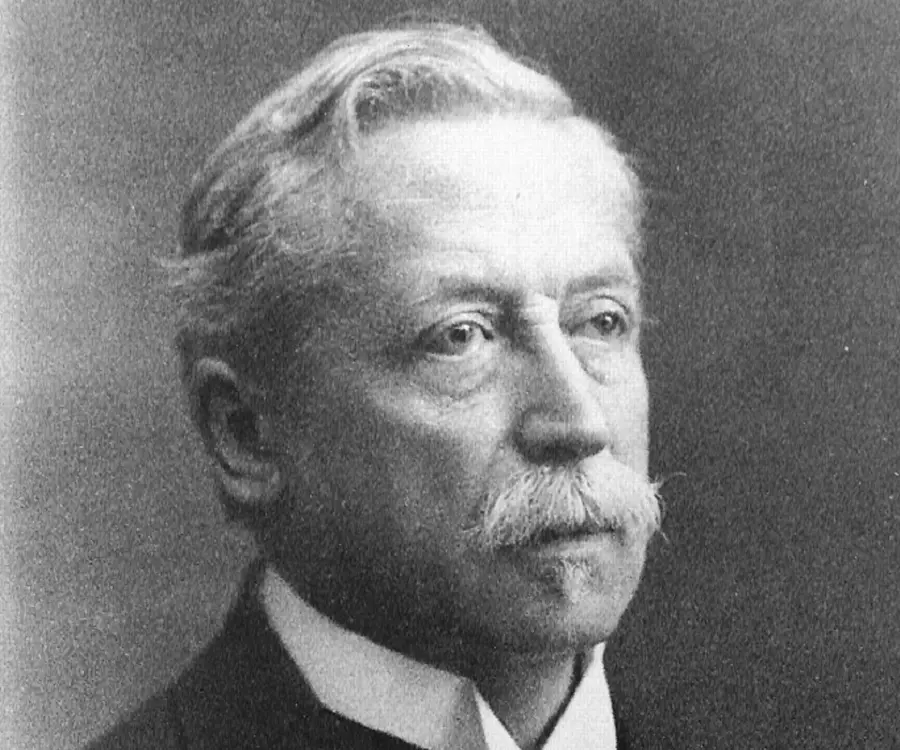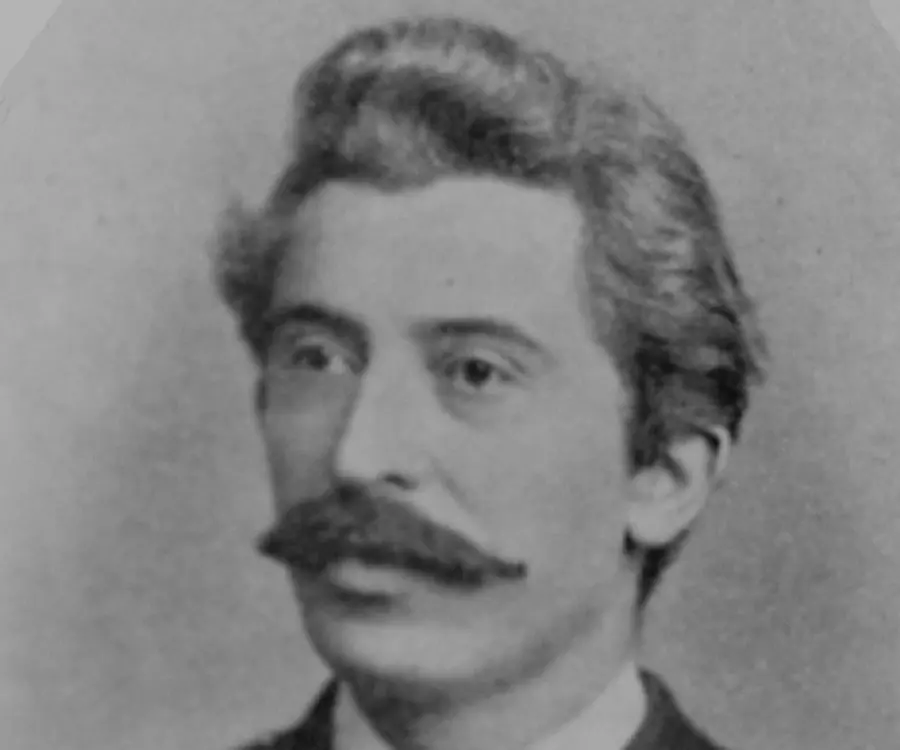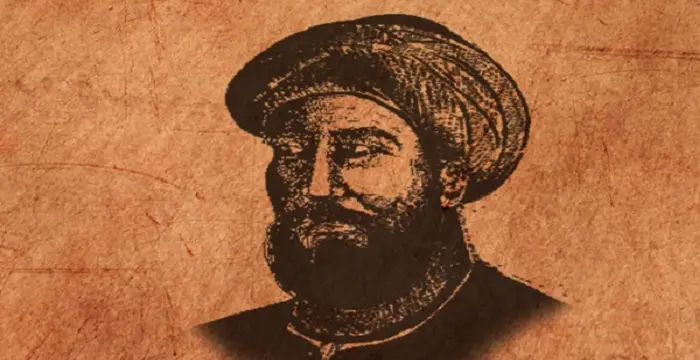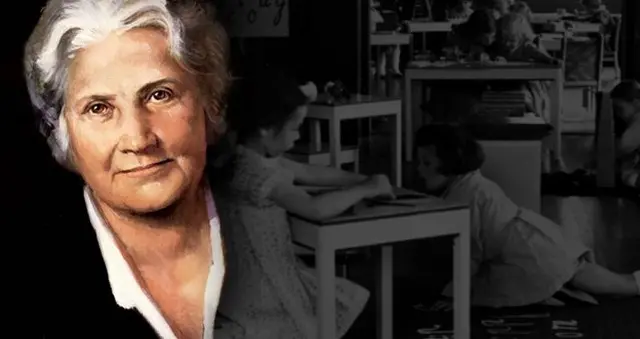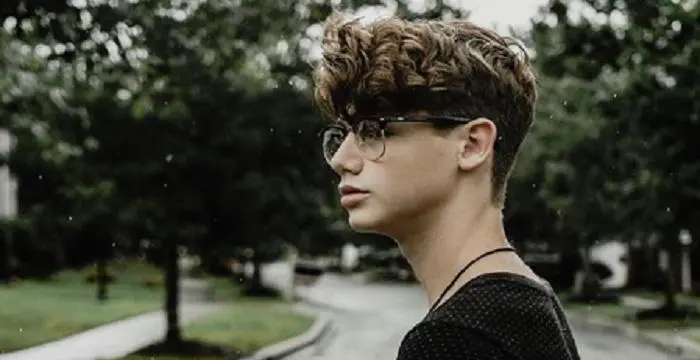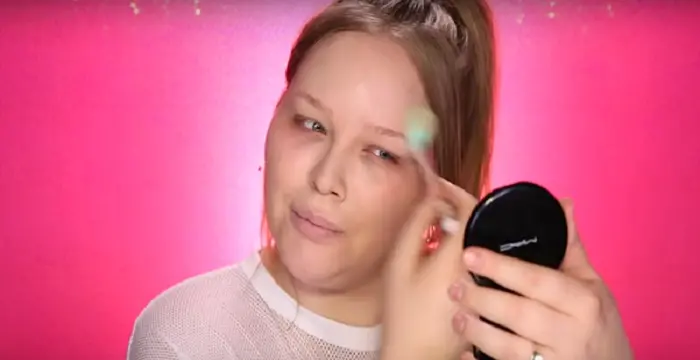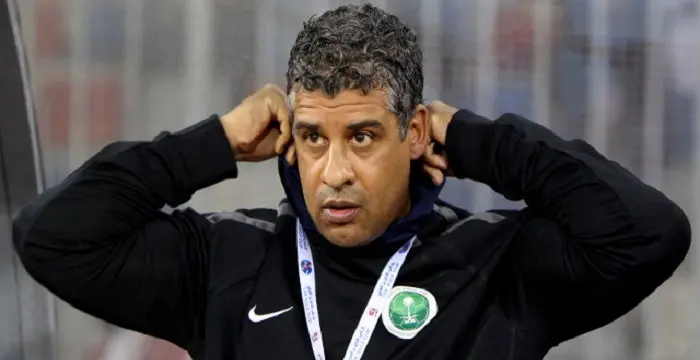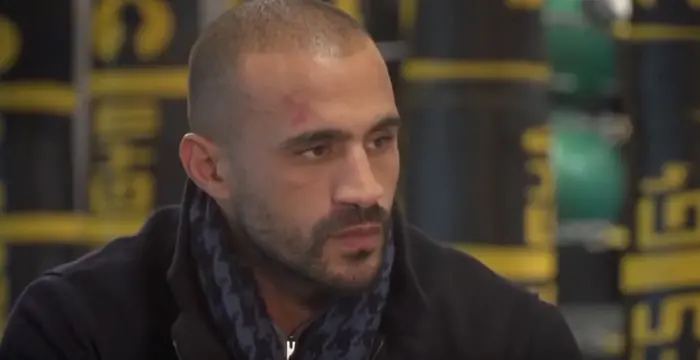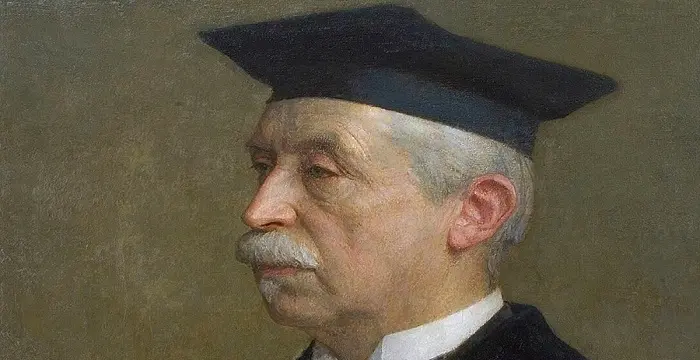
Christiaan Eijkman - Physicians, Career and Childhood
Christiaan Eijkman's Personal Details
Christiaan Eijkman was a Dutch physician, who is known for his work on the disease beriberi
| Information | Detail |
|---|---|
| Birthday | August 11, 1858 |
| Died on | November 5, 1930 |
| Nationality | Dutch |
| Famous | Physicians, Bacteriologists |
| Spouses | Aaltje Wigeri van Edema, Bertha Julie Louise van der Kemp |
| Siblings | Johann Frederik Eijkman |
| Childrens | Pieter Hendrik |
| Universities |
|
| Discoveries / Inventions |
|
| Birth Place | Nijkerk |
| Gender | Male |
| Father | Christiaan Eijkman |
| Mother | Johanna Alida Pool |
| Sun Sign | Leo |
| Born in | Nijkerk |
| Famous as | Physician |
| Died at Age | 72 |
// Famous Bacteriologists
Alexander Fleming
Alexander Fleming was a Scottish biologist and pharmacologist who discovered enzyme lysozyme and antibiotic penicillin. This biography of Alexander Fleming profiles his childhood, life, research, discoveries, achievements and timeline.
Ferdinand Cohn
Ferdinand Cohn was a German biologist who is considered as the father of bacteriology and microbiology. Check out this biography to know about his childhood, life, achievements, works & timeline.
Louis Pasteur
Louis Pasteur was a French chemist and microbiologist who developed the first vaccines for rabies and anthrax. This biography of Louis Pasteur provides detailed information about his childhood, life, achievements, works & timeline.
Christiaan Eijkman's photo
Who is Christiaan Eijkman?
Christiaan Eijkman was a Dutch physician and a professor of physiology, who is known for his work on the disease beriberi and the discovery of antineuritic vitamins. The son of a school teacher, he aimed to become a doctor but his family’s financial status did not allow the 6,000 guilds needed for his medical education. Thus he pledged to join the military service which would enable him to study medicine free of cost. Later he was sent to Dutch East Indies, now called Indonesia, as an Army Surgeon. Here he first came into contact with cases of beriberi and was perplexed by it. Later he trained himself as a bacteriologist and returned to Java, where he spent the next ten years investigating the disease. After a long and painstaking research, he was able to prove that unpolished rice contained some ingredient, which could both prevent and cure beriberi, but it was lost when the rice was polished. Unfortunately, he had to return home soon after that, but his discovery set the stage for further investigation, which led to the discovery of antineuritic vitamins (Thiamine). A year before his death, he was awarded the Nobel Prize for his contribution to the discovery.
// Famous Physicians
Al-Zahrawi
Al-Zahrawi, was an illustrious medieval Arab Muslim physician and surgeon. Check out this biography to know about his childhood, family life, achievements and interesting facts about him.
Jabir Ibn Hayyan
Jabir Ibn Hayyan was a medieval era polymath. Check out this biography to know about his life, works and achievements.
Maria Montessori
Maria Montessori was a physician and educator who developed the approach of Montessori education. This biography of Maria Montessori provides detailed information about her childhood, life, achievements, works & timeline.
Childhood & Early Life
Christiaan Eijkman was born on 11 August 1858 in the small town of Nijkerk, located in the province of Gelderland in Netherlands. His father, also named Christiaan Eijkman, was the headmaster of a local school. His mother’s name was Johanna Alida Pool.
Christiaan, born seventh of his parents’ eight children, had several gifted brothers. One of them, a chemist, is credited with isolating shikimic acid from the Japanese flower shikimi. Another brother was a noted linguist while a third one was one of the first Dutch roentgenologists.
In 1859, his father was appointed headmaster of a school for advanced elementary education in Zaandam, a large town located in the province of North Holland. It was in this school that Christiaan began his education.
Growing up under the guidance of his father, he passed the school leaving examination in 1875. His ambition was to become a doctor; but the financial condition of the family did not permit that.
Therefore, he enrolled at the Army Medical School under the University of Amsterdam, pledging that he would join the military service on completion of the course. This enabled him to study medicine free of cost. He was a brilliant student, passing his medical examination magna cum laude.
From 1879 to 1881, he assisted Thomas Place, the Professor of Physiology at the University of Amsterdam. It was during this period that he started working on his doctoral thesis.
The dissertation, titled ‘Over Polarisatie in de Zenuwen’ (on polarization in the nerves), earned him his MD degree on 13 July 1883. Thereafter, as was stipulated, he joined the Netherland Indies Army.
Military Service
Towards the end of 1883, Christiaan Eijkman was sent to the island of Java, then known as Dutch East Indies, as an Army Surgeon. There he was posted first at Semarang and later at Tjilatjap.
At Java, he was surprised to note that a large number of soldiers, previously healthy, were debilitated by a peculiar disease, which caused peripheral neuropathy, muscle pain and atrophy, and cognitive dysfunction, leading to heart failure and death. Locally the disease was called beriberi.
However before he could do anything, he himself was inflicted with malaria. It was so severe that in November 1885, he was sent back to Netherlands on sick leave, where he decided to train himself in bacteriology, at that time a newly discovered discipline.
He first studied with Josef Förster at Amsterdam. Later, he moved to Berlin to work with Robert Koch, who had by then not only discovered the bacterium responsible for causing tuberculosis, but also the method for growing the bacterium and infecting animals with it.
At that time, it was indeed a revolutionary discovery, mainly because the doctors were clueless about the root cause of diseases like tuberculosis and malaria. With Koch’s discovery they began to see the light.
Meanwhile, the Netherlands government was worried about the large number of cases of beriberi that plagued their soldiers in the East Indies. They constructed a committee that would study the disease on the spot. It consisted among others, two young scientists, pathologist Cornelis Adrianus Pekelharing and neurologist Cornelis Winkler.
Sometime in 1886, Pekelharing and Winkler traveled to Berlin to meet Koch and learn about bacteriology. There they met Eijkman, who though not fully cured, volunteered to join the mission. Subsequently, in the month of October, he left for the East with the committee.
On reaching the Dutch East Indies, the team set up a temporary laboratory in the Military Hospital in Batavi, now renamed Djakarta. Before long, Pekelharing isolated a micrococcus, which seemed to cause polyneuritis, from the blood of beriberi patients.
However, Eijkman was skeptical about it for it did not match with Koch’s suggestions. Moreover, he tried to transmit the disease by injecting the cultured micrococcus into chickens, rabbits, dogs and monkeys, but failed.
In 1887, Pekelharing and Winkler were called back to Netherlands; but before they left they proposed that the laboratory they had set up be made permanent, a suggestion that was readily accepted. Eijkman remained behind as its first Director.
Subsequently, Eijkman was also appointed as the Director of the Javanese Medical School, locally known as Dokter Djawa School, where he taught physiology and organic chemistry. With that, his military service came to an end and he was able to concentrate on his research.
As A Researcher
On 15 January 1888, Christiaan Eijkman became the Director of the medical laboratory, Geneeskundig Laboratorium, holding the position up to 4 March 1896. It was here that he made significant discoveries.
Initially, he tried to infect rabbits and monkeys with microorganisms; but without any success. He therefore concluded that beriberi takes a long time to develop. At the same time, it was not possible to wait too long for the disease to develop.
Therefore, he started looking for animals that would quickly develop the disease and at the same time were inexpensive to keep. He then bought a large number of chickens and kept their cages under the extended roof of the laboratory. He injected a few of them with microorganisms, keeping others as control.
Within a month all the chickens became sick. He then examined them closely through autopsy and histological examination, carefully documenting of their symptoms and disease progression. He found the disease identical to beriberi or polyneuritis endemica perniciosa and so he named it polyneuritis gallinarum.
As regarding the cause of the outbreak, he concluded that the chickens which had been injected had infected the others. To make sure, he bought a few more chickens and kept them in separate cages, but soon enough, they also became sick.
On assuming that the whole laboratory had been infected, he decided to keep new chickens in separate location. However, as he did that, all sick chickens, every one of them, got well without him administering any medicine or doing anything to cure them. He was truly puzzled.
He did find the answer, but from an unusual source; it was from the man who fed the chickens. During the outbreak, he fed them with leftover rice from the adjacent hospital. But later it became unavailable and so he fed them with rice bought from the market.
On further enquiry, Eijkman found that the rice fed during the outbreak was polished; but the rice bought from the market was unpolished. After much trial and error, he realized that unpolished rice must contain certain nutrient that went missing when the rice is polished.
He called this to be ‘the anti-beriberi factor’ that both prevented and cured the disease. He however did not known what it exactly was and thought that it must be a toxin in the rice grain that is neutralized by some ingredient in the hull.
On further research, he came to the conclusion that the disease must be caused by some kind of bacteria. He ruled out factors like blood contamination, respiratory metabolism, perspiration, or temperature variation.
In 1895, he was ready for human trial and for that purpose contacted A. G. Vorderman, the supervisor of the Civil Health Department of Java. With his help, he conducted a massive survey on the inmates of the prison and many cases of beriberi were cured.
Concurrently, he also worked on fermentation and wrote two textbooks for his students of the Medical College. In 1896, he became ill and returned to the Netherlands, again on sick leave. However, before going home, he asked his friend Adolphe Vorderman to continue the research work.
Return To Home
On returning home, Christiaan Eijkman first joined the University of Utrecht as an instructor. Subsequently in 1898, he was appointed Professor in Hygiene and Forensic Medicine at Utrecht, a position he held until 1928. During this long period, he worked mainly on bacteriology, guiding many research projects in his laboratory.
Among the research projects of this period, the fermentation test that helped to establish if any water body has been polluted with coli bacilli through human or animal defecation was of prime importance. Later he worked on the rate of mortality of bacteria and as well as its growth in solid substance.
He was also a successful teacher and was known for his practical knowledge as well as his clarity of speech. He encouraged free thoughts in his students and warned them against accepting dogmas.
However, he did not confine himself to academic life alone. He was also a member of many governmental organizations and involved himself in public welfare measures like water supply, housing, school hygiene, and physical education.
In addition, as member of Gezondheidsraad and Gezondheidscommissie, he took active part in campaigns against alcoholism. He also participated in struggle against tuberculosis and established Vereeniging tot Bestrijding van de Tuberculose (Society for the struggle against tuberculosis).
Major Works
Christiaan Eijkman is best remembered for his work on beriberi, which for the first time, demonstrated that the disease is linked to one’s diet and that unpolished rice had both a preventive and curative effect in it.
Although he could not finish the work due to ill health, his initial discoveries in this field led to a series of experiments which culminated in the discovery of thiamin – vitamin B1 in the pericarp of the unpolished rice grains as the preventive agent for beriberi.
Awards & Achievements
In 1907, he was appointed Member of the Royal Netherlands Academy of Arts and Sciences. In addition, he was a foreign associate of the National Academy of Sciences in Washington and an honorary fellow of the Royal Sanitary Institute in London.
In 1929, Christiaan Eijkman was co-awarded the Nobel Prize in Physiology or Medicine "for his discovery of the antineuritic vitamin.” The co-recipient of the award was Sir Frederick Hopkins who received his share "for his discovery of the growth-stimulating vitamins."
He was also the recipient of several orders of knighthood conferred upon him by the Dutch Government.
Personal Life & Legacy
In 1883, before leaving for the Dutch East Indies, Eijkman married Aaltje Wigeri van Edema. She died three years later in 1886. The couple did not have any children.
Later in 1888, he married Bertha Julie Louise van der Kemp. The couple had a son, Pieter Hendrik, born in 1890. He also grew up to become a physician.
After retiring in 1928, Eijkman began to suffer from various illnesses and by 1929 he was so ill that he could not travel to Norway to accept the Nobel Prize in person. He died on 5 November 1930, after a long period of illness in Utrecht.
The Eijkman Medal, established on the occasion of the 25th anniversary of his professorship, carries his legacy even today.
The research center at Djakarta, where he once worked, has now been renamed Eijkman Institute for Molecular Biology by the Government of Indonesia.
Trivia
Although Eijkman has been credited for the discovery of the antineuritic vitamin by the Nobel Committee, it was actually the Polish biochemist Casimir Funk, who in 1912 discovered thiamine and formulated the concept of vitamins. For some reason, his contribution was never given the credit it deserved.
// Famous Leo Celebrities peoples
Eugenia Cooney
Check out all that you wanted to know about Eugenia Cooney, the famous American Vlogger & YouTube Personality; her birthday, her family and personal life, her boyfriends, fun trivia facts and more.
Princess D
Princess D (Destiny Indira Cox) is an American rapper, dancer and social media personality. Let’s have a look at her family and personal life including age, birthday, net worth, and fun facts.
Payton Moormeier
Payton Moormeier is an American social-media personality best known for his musical.ly videos. Check out this family, personal life, etc.
Christiaan Eijkman's awards
| Year | Name | Award |
|---|---|---|
Other | ||
| 0 | 1929 - Nobel Prize in Physiology or Medicine | |
Christiaan Eijkman biography timelines
- // 11th Aug 1858Christiaan Eijkman was born on 11 August 1858 in the small town of Nijkerk, located in the province of Gelderland in Netherlands. His father, also named Christiaan Eijkman, was the headmaster of a local school. His mother’s name was Johanna Alida Pool.
- // 1859In 1859, his father was appointed headmaster of a school for advanced elementary education in Zaandam, a large town located in the province of North Holland. It was in this school that Christiaan began his education.
- // 1875Growing up under the guidance of his father, he passed the school leaving examination in 1875. His ambition was to become a doctor; but the financial condition of the family did not permit that.
- // 1879 To 1881From 1879 to 1881, he assisted Thomas Place, the Professor of Physiology at the University of Amsterdam. It was during this period that he started working on his doctoral thesis.
- // 1883Towards the end of 1883, Christiaan Eijkman was sent to the island of Java, then known as Dutch East Indies, as an Army Surgeon. There he was posted first at Semarang and later at Tjilatjap.
- // 1883In 1883, before leaving for the Dutch East Indies, Eijkman married Aaltje Wigeri van Edema. She died three years later in 1886. The couple did not have any children.
- // 13th Jul 1883The dissertation, titled ‘Over Polarisatie in de Zenuwen’ (on polarization in the nerves), earned him his MD degree on 13 July 1883. Thereafter, as was stipulated, he joined the Netherland Indies Army.
- // Nov 1885However before he could do anything, he himself was inflicted with malaria. It was so severe that in November 1885, he was sent back to Netherlands on sick leave, where he decided to train himself in bacteriology, at that time a newly discovered discipline.
- // 1886Sometime in 1886, Pekelharing and Winkler traveled to Berlin to meet Koch and learn about bacteriology. There they met Eijkman, who though not fully cured, volunteered to join the mission. Subsequently, in the month of October, he left for the East with the committee.
- // 1887In 1887, Pekelharing and Winkler were called back to Netherlands; but before they left they proposed that the laboratory they had set up be made permanent, a suggestion that was readily accepted. Eijkman remained behind as its first Director.
- // 1888Later in 1888, he married Bertha Julie Louise van der Kemp. The couple had a son, Pieter Hendrik, born in 1890. He also grew up to become a physician.
- // 15th Jan 1888On 15 January 1888, Christiaan Eijkman became the Director of the medical laboratory, Geneeskundig Laboratorium, holding the position up to 4 March 1896. It was here that he made significant discoveries.
- // 1895In 1895, he was ready for human trial and for that purpose contacted A. G. Vorderman, the supervisor of the Civil Health Department of Java. With his help, he conducted a massive survey on the inmates of the prison and many cases of beriberi were cured.
- // 1896Concurrently, he also worked on fermentation and wrote two textbooks for his students of the Medical College. In 1896, he became ill and returned to the Netherlands, again on sick leave. However, before going home, he asked his friend Adolphe Vorderman to continue the research work.
- // 1898 To 1928On returning home, Christiaan Eijkman first joined the University of Utrecht as an instructor. Subsequently in 1898, he was appointed Professor in Hygiene and Forensic Medicine at Utrecht, a position he held until 1928. During this long period, he worked mainly on bacteriology, guiding many research projects in his laboratory.
- // 1907In 1907, he was appointed Member of the Royal Netherlands Academy of Arts and Sciences. In addition, he was a foreign associate of the National Academy of Sciences in Washington and an honorary fellow of the Royal Sanitary Institute in London.
- // 1912Although Eijkman has been credited for the discovery of the antineuritic vitamin by the Nobel Committee, it was actually the Polish biochemist Casimir Funk, who in 1912 discovered thiamine and formulated the concept of vitamins. For some reason, his contribution was never given the credit it deserved.
- // 1928 To 5th Nov 1930After retiring in 1928, Eijkman began to suffer from various illnesses and by 1929 he was so ill that he could not travel to Norway to accept the Nobel Prize in person. He died on 5 November 1930, after a long period of illness in Utrecht.
- // 1929In 1929, Christiaan Eijkman was co-awarded the Nobel Prize in Physiology or Medicine "for his discovery of the antineuritic vitamin.” The co-recipient of the award was Sir Frederick Hopkins who received his share "for his discovery of the growth-stimulating vitamins."
// Famous Dutch peoples
Nikkie De Jager
Check out all that you wanted to know about Nikkie De Jager, the famous Dutch Makeup artist; her birthday, her family and personal life, her boyfriends, fun trivia facts and more.
Romee Strijd
Romee Strijd is a Dutch model, also known as a 'Victoria's Secret Angel.' Check out this biography to know about her family, personal life, including her age, birthday, etc.
Nisrina Sbia
Nisrina Sbia is a social media influencer and model who rose to fame and has made it big on Instagram. Check out this biography to know about her birthday, childhood, family life, achievements and fun facts about her.
Jelle Van Vucht
Jelle Van Vucht is a Dutch YouTube star and gamer. Let’s have a look at his age, family life, birthday, net worth, girlfriends, and some fun facts.
Frank Rijkaard
Frank Rijkaard is a retired Dutch footballer often regarded as one of the greatest defensive midfielders. This biography profiles his childhood, life, football career, achievements and timeline.
Badr Hari
Badr Hari is a Moroccan-Dutch super heavyweight kickboxer. Check out this biography to know about his childhood, family life, achievements and fun facts about his life.
Christiaan Eijkman's FAQ
What is Christiaan Eijkman birthday?
Christiaan Eijkman was born at 1858-08-11
When was Christiaan Eijkman died?
Christiaan Eijkman was died at 1930-11-05
Where was Christiaan Eijkman died?
Christiaan Eijkman was died in Utrecht
Which age was Christiaan Eijkman died?
Christiaan Eijkman was died at age 72
Where is Christiaan Eijkman's birth place?
Christiaan Eijkman was born in Nijkerk
What is Christiaan Eijkman nationalities?
Christiaan Eijkman's nationalities is Dutch
Who is Christiaan Eijkman spouses?
Christiaan Eijkman's spouses is Aaltje Wigeri van Edema, Bertha Julie Louise van der Kemp
Who is Christiaan Eijkman siblings?
Christiaan Eijkman's siblings is Johann Frederik Eijkman
Who is Christiaan Eijkman childrens?
Christiaan Eijkman's childrens is Pieter Hendrik
What was Christiaan Eijkman universities?
Christiaan Eijkman studied at Universiteit van Amsterdam
What is Christiaan Eijkman's inventions/discoveries?
Beriberi And Vitamins was invented (or discovered) by Christiaan Eijkman
Who is Christiaan Eijkman's father?
Christiaan Eijkman's father is Christiaan Eijkman
Who is Christiaan Eijkman's mother?
Christiaan Eijkman's mother is Johanna Alida Pool
What is Christiaan Eijkman's sun sign?
Christiaan Eijkman is Leo
How famous is Christiaan Eijkman?
Christiaan Eijkman is famouse as Physician
